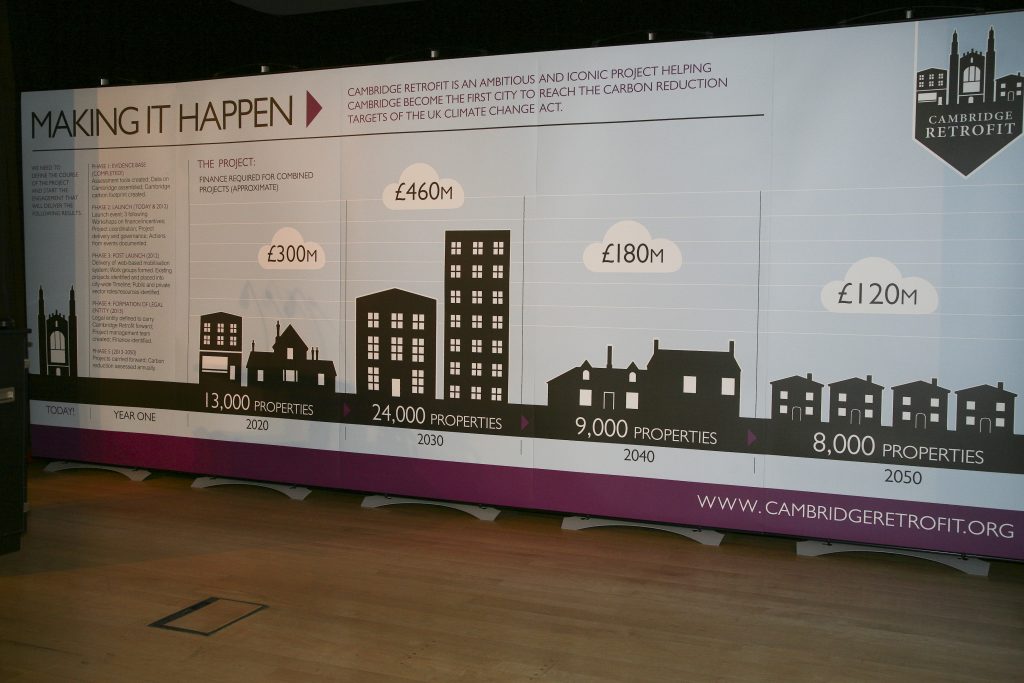Why are there two Es in ESG?
December 2022 | Prof Douglas Crawford-BrownThe ESG (Environmental, Social and Governance) movement began in the late 20th century as a rejoinder to a narrow focus of business on bottom-line profit (Economy). It is a movement that places equal value on the environmental impacts of a business, the effects it has on the social fabric of its employees and the communities in which they live, and the ways in which the business governs itself with respect to qualities such as transparency, equality, diversity and human rights. The argument has been that failure to consider ESG performance of a business is not only an incomplete and unjust understanding of its role in society, but one that will in the long run be unsustainable as the natural and human capital on which a business depends is eroded.

The movement has since migrated into the larger issues of local, national and global governance, and into the ideas of Place and Sense of Place. Economic vitality has long been at the heart of government policy as it is directed at community development. This is especially understandable as we slide towards a global recession. Economic performance is a key concern of citizens. People want jobs and economic security and strong public services underlain by a solid tax base. Without a sound economy, it is difficult for councils to justify a focus on anything more than mandated, statutory services. Net Zero, climate resilience, cultural place-making can be left in the shade as economic performance holds pride of place in masterplanning.
If ESG is thought of as a way to challenge the place of economics in community performance, it is likely that economics will remain the dominant force in planning. However, thinking of ESG as being apart from – and in opposition to – economics is a fundamental misunderstanding of how economics and sustainability interact. A focus on ESG alone is inadequate, and so at genecon we evaluate community performance with an extra ‘E’: EESG or Economic, Environmental, Social and Governance. Why is this the case? It goes well beyond the argument given above that governments rely on a strong economy to support their services and keep citizens happy. Let’s consider four additional and arguably more compelling reasons.
First and foremost, economy and sustainability have always been linked rather than in conflict. There is a tendency to think of sustainability as a rather new concept, perhaps emerging from the 1960s or at least from the Brundtland Commission’s 1987 report on Our Common Future. That is certainly when sustainability entered the public imagination. However, it has much older roots, dating back to at least 18th century Germany and the idea of Nachhaltigkeit (basically, ever-lasting). The German economy depended on a plentiful supply of wood for manufacturing, constructing buildings, heating homes and businesses and industrial processes. Society began to notice that this wood was in increasingly short supply, with the implication that the economy might grind to a halt as this natural capital was depleted. Enter the practice of sustainable forestry, Nachhaltigkeit. The economy and natural capital were not seen as two opposing forces but rather a twin set of concerns to be managed together because they were linked inextricably.
Here are some more connections between E and ESG. If we gather data on the relationship between per capita GDP and human health using the World Bank Global Health database, we find two striking patterns. As this economic metric increases in a country, the lifespan of its citizens also increases. This is in part due to (better) access to (better) healthcare, in part due to improved diet and in part due to decreasing sensitivity to environmental pollutants as people become wealthier and healthier. The pattern is not without complications. A regression function over the data certainly displays this trend of increasing economic performance being correlated with increasing health (a social metric). Lifespan increases in general as per capita GDP increases. But if one compares countries with the same per capita GDP, there can be as much as a 10 year difference in lifespan. So the issue clearly is not only driven by economic performance. There are other factors such as the amount of environmental degradation per unit of GDP, how a country invests its economic resources, and how health care is distributed equitably or otherwise, at play.
This pattern sits at the heart of discussions of equity in global climate policy such as the United Nations Framework Convention on Climate Change (UNFCCC). In that policy framework, we divide countries into Annex I and non-Annex I nations. Annex I nations must begin reducing emissions immediately, with a goal of at least 80% reduction by 2050. Non-Annex I nations are not required to reduce emissions immediately, but rather to reduce the carbon intensity of their economies, and only eventually to reduce emissions in absolute terms. They will generate more carbon dioxide in the short term as they develop economically, eventually also reducing their absolute emissions.
Why is this division necessary to achieve EESG? About a third of the world’s population lives in crushing poverty, sitting at the bottom of the global ‘economic pyramid’. These people deserve to be lifted out of this poverty. Leaving them there would be an injustice, violating so many of the Indicators in the S of EESG. So countries with a large percentage of people at the bottom have been given time to first develop their economies and then to reduce their emissions. In the meantime, the Annex I nations are committed to providing the economic and technological resources to allow those poorer nations to take a different, low carbon, path to economic development than we took here in the UK. They are given the resources to create an economy with a lower carbon intensity (tonnes of carbon dioxide per unit GDP). Other funding is provided to vulnerable nations who need help in coping with, adapting to, whatever level of climate change takes place despite our best collective efforts at mitigation. Transferring those resources requires strong economies in the Annex I nations. Again, E is not in conflict with ESG, but rather an integral part of EESG.

Image: The launch of the Cambridge Retrofit effort to improve the energy efficiency and reduce carbon emissions from 60,000+ buildings in Cambridge, brought together community members from the Economic, Environmental, Social and Governance sectors to work on a collective action challenge.
The next issue is that economics is often viewed as the transfer of money between economic sectors, producing happiness and well-being. This is true, but it is only part of the picture. An economy also involves physical activities such as industry. An economy therefore also extracts material and energy from the environment, transforms it, and sends it back out as goods, services, waste and pollution. An economy in this sense is not different to the infrastructure or built environment. It can therefore be treated in exactly the same way in evaluations, tracing not only the flow of money but the flow of material and energy into, within and out of the economic system. Input-output models are increasingly sophisticated ways to map this flow and understand how to adjust it for improved ESG impacts.
Finally, consider the dominance of cost-benefit analysis rooted in microeconomics. At the Cambridge Centre for Climate Change Mitigation Research (directing it was my life before associating with genecon), we found two issues getting in the way of sound national and global governance for climate:
- Policy evaluations rooted in cost-benefit often ignore the issues of costs to whom and benefits to whom. In most development plans, the costs and benefits are not borne equally. This is especially true in global climate policy, where the rich nations do the emitting and the poor nations suffer the consequences. Cost-benefit arguments can obscure concerns for equity and justice; they need not, but often do in practice.
- Microeconomics fails to account for the interactions between economic sectors. Money spent on environmental protection is certainly a cost to a specific industry (or a council), but that money is not taken outside and burned. It goes elsewhere in the economy through intermediate transactions. Depending on the economic efficiency of both the original and secondary sectors, the multiplier effect can be either above or below 1. Macroeconomic modelling is the more appropriate way to address this issue. Our own modelling at Cambridge using dynamic, non-equilibrium models (which do not assume that markets clear and economies reach equilibrium after a change in policy) shows that reduction of carbon dioxide need not be a drain on the economy. It can stimulate an increase in GDP by unlocking under-utilised human capital and stimulating innovation. While the narrative coming out of cost-benefit analysis was always based on how much of the GDP we might be willing to sacrifice in the name of climate policy (and guess which side of this equation would win the battle!), our modelling provided a narrative that GDP and decarbonisation could grow hand-in-hand with carefully selected suites of policies. To see this, consider the book Decarbonising the World’s Economy (Barker and Crawford-Brown, Imperial College Press, 2015), which lays out that suite and shows the connection between decarbonisation and increased GDP.
Each of these arguments suggests that the first E (Economics) is not to be counterbalanced against a concern for ESG, but rather folded into a more complete idea of sustainable Place-making through evaluations based on EESG. ‘E’ by itself is insufficient to create good Places, but the same is true for ‘ESG’.
< Back to News, Views & Insights
More articles
What do the UK political parties have to say about placemaking?
19th June 2024The publication of Reform UK’s manifesto on Monday 17th June saw the last of the main UK-wide political parties release their proposed legislative pitch to the national electorate ahead of the General Election on Thursday 4th July. Now whilst much of the commentariat have understandably tended to hone in on the respective political parties’ plans […]

Making the most of the Three Investment Themes
24th April 2024The £20m endowment-style funding provided to Town Boards through the Long-Term Plan for Towns programme to allocate across three investment themes over the next decade represents a place-based approach to levelling-up which is forward-looking and agile in its approach. Whilst there is no requirement on how towns utilise funding across the three investment themes, the […]

What does art mean to you?
15th April 2024Many people think of art as painting, drawing – the visual arts you go to a gallery to see. But art is much more than that – its any object or experience that communicates an idea, an emotion, or a view of the world, and it can take many forms. ‘Art isn’t just what we […]